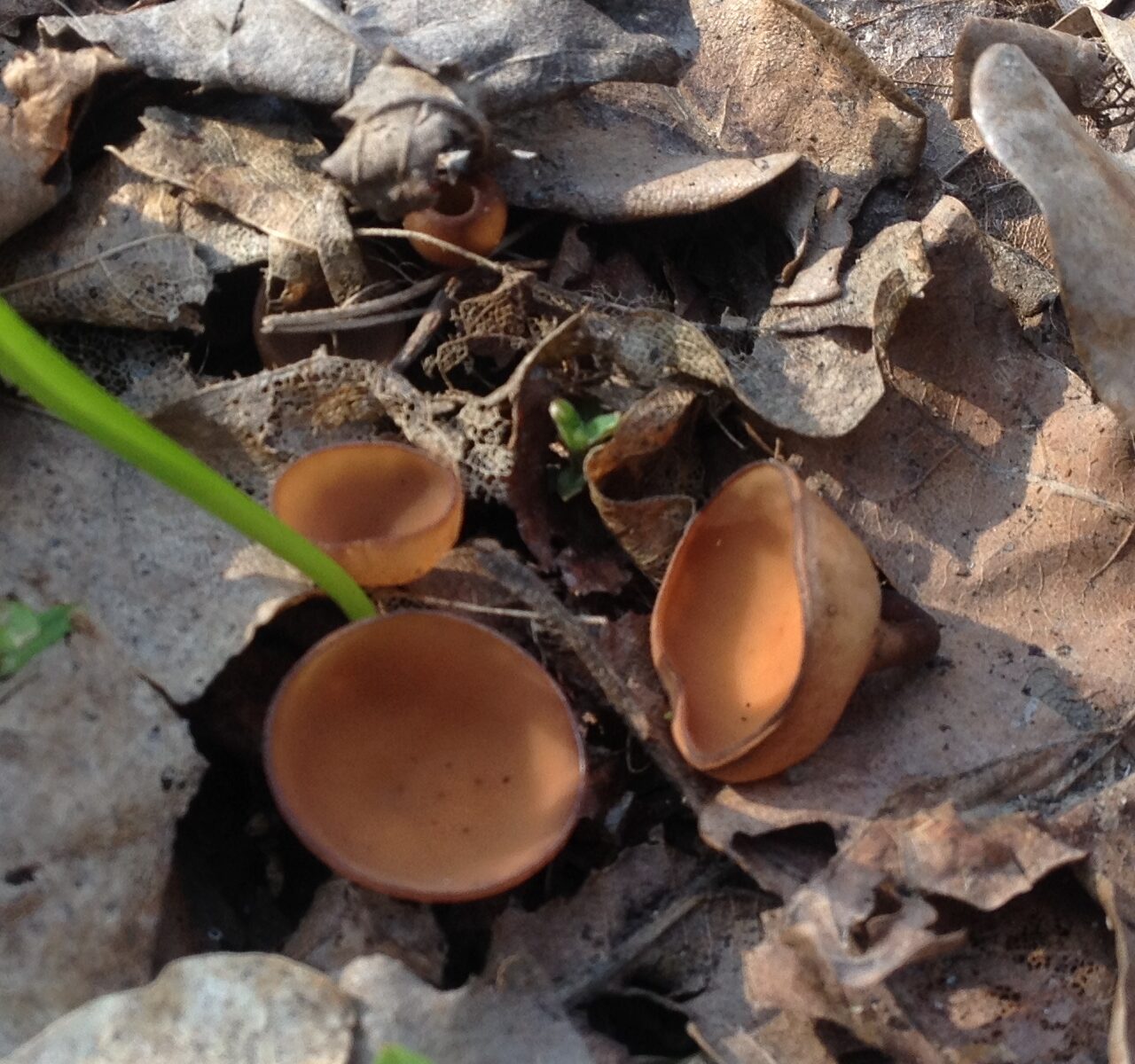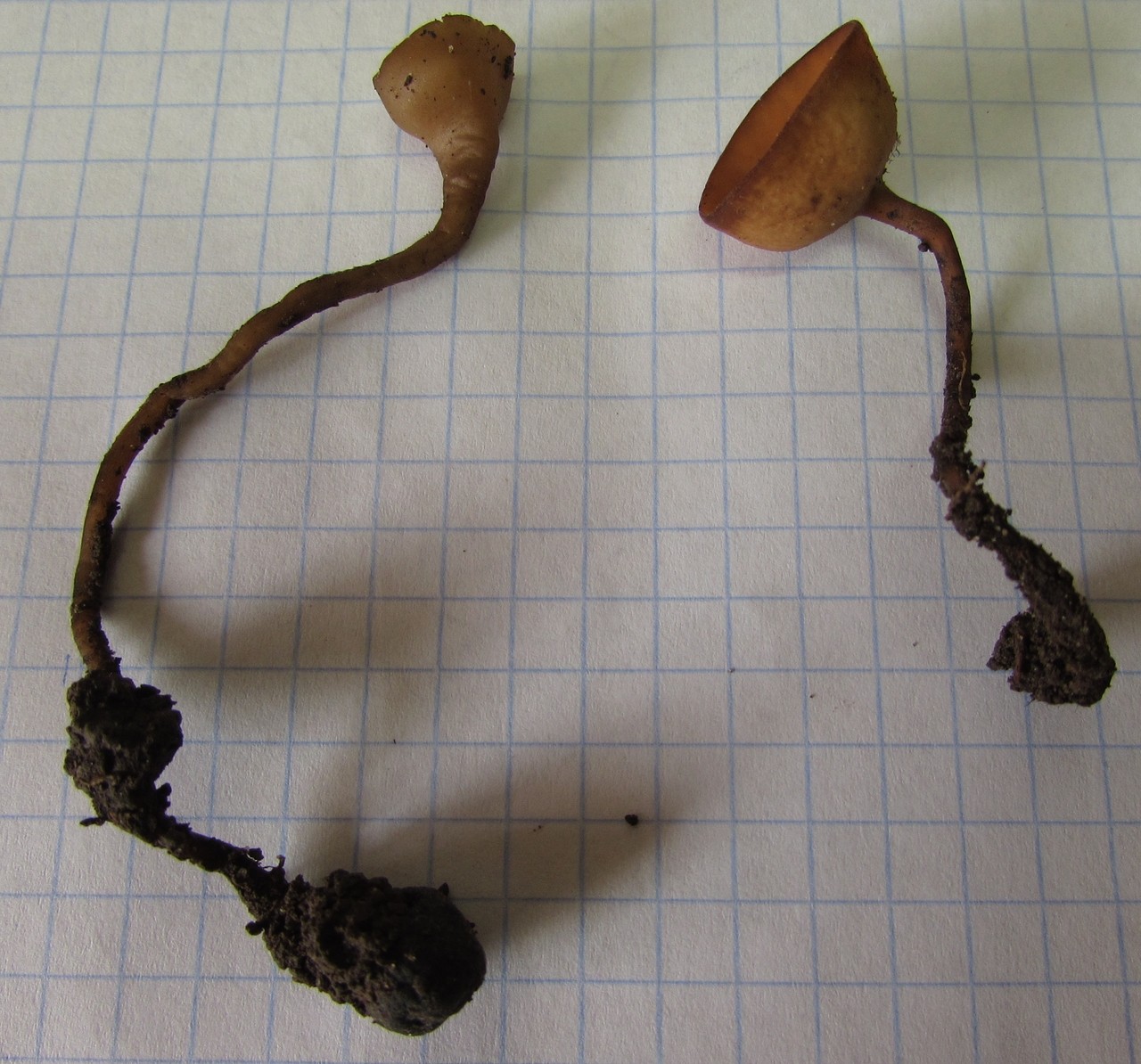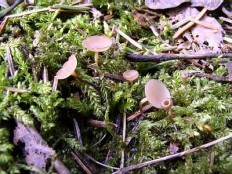Dumontinia tuberosa (Dumontinia tuberosa)
- Departament: Ascomycota (Ascomycetes)
- Subdiviziunea: Pezizomycotina (Pezizomycotins)
- Clasa: Leotiomycetes (Leociomycetes)
- Subclasa: Leotiomycetidae (Leocyomycetes)
- Ordin: Helotiales (Helotiae)
- Family: Sclerotiniaceae (Sclerotiniaceae)
- Genus: Dumontinia (Dumontinia)
- Tip: Dumontinia tuberosa (Sclerotinia tuberous)
- Sclerotinia spikes
- Octospora tuberosa
- Hymenoscyphus tuberosus
- Whetzelinia tuberosa
- tuberous fish
- Macroscyphus tuberosus

Titlul curent - (după Specii de ciuperci).
Tuberous Dumontinia, also known as Dumontinia cone-shaped or Dumontinia cone (the old name is Sclerotinia tuberous) is a small cup-shaped spring mushroom that grows profusely in clusters of anemone (Anemone).
Corpul fructului cup-shaped, small, on a long thin stem.
Ceaşcă: Height no more than 3 cm, diameter 2-3, up to 4 cm. At the beginning of growth, it is almost rounded, with a strongly curved edge. With growth, it takes the form of a cup or cognac glass with an edge slightly bent inward, then gradually opens, the edge is even or even slightly bent outwards. The calyx is usually beautifully shaped.
The inner surface is fruit-bearing (hymenal), brown, smooth, on the “bottom” it can be slightly folded, blackish.
The outer surface is sterile, smooth, light brownish, matte.

Picior: well defined, long, up to 10 cm long, thin, about 0,3 cm in diameter, dense. Almost completely submerged in the soil. Uneven, all in rounded bends. Dark, brownish-brown, blackish.
If you carefully dig the leg to the very base, it will be seen that the sclerotium adheres to the tubers of plants (anemone). It looks like blackish nodules, oblong, 1-2 (3) cm in size.

pulbere de spori: whitish-yellowish.
dispute: colorless, ellipsoid, smooth, 12-17 x 6-9 microns.
Pulpă: very thin, brittle, whitish, without much smell and taste.
Dumontinia pineal bears fruit from the end of April to the end of May in deciduous and mixed forests, on the soil, in lowlands, in glades and roadsides, always next to the Anemone flowers. It grows in small groups, occurs everywhere, quite often, but rarely attracts the attention of mushroom pickers.
Dumontinia sclerotium is formed on the tubers of various types of anemone – ranunculus anemone, oak anemone, three-leaf anemone, very rarely – spring chistyak.
Representatives of Sclerotinia belong to the biological group of hemibiotrophs.
In spring, during the flowering of plants, fungal ascospores are dispersed by the wind. Once on the stigma of the pistil, they germinate. Infected inflorescences turn brown and die, and the affected stems do not bear fruit. The hyphae of the fungus slowly grow down the stem and form spermatozoa under the epidermis. Spermations break through the epidermis and appear on the surface of the stems in the form of brown or emerald slimy droplets. Droplet-liquid moisture and insects spread spermatozoa down the dying stem, where sclerotia begin to develop.
Dumontinia is considered an inedible mushroom. There is no data on toxicity.
There are several types of spring mushrooms that are similar to Dumontia.
For accurate identification of Dumontinia tuberosa, if you do not have a microscope at hand, you need to dig up the stem to the very base. This is the only reliable macrofeature. If we dug out the whole leg and found that the sclerotium envelops the anemone tuber, we have exactly dumontinia in front of us.

Ciboria amentacea (Ciboria amentacea)
The same small inconspicuous cups of beige, beige-brown color. But Ciboria amentacea is on average smaller than Dumontinia tuberosa. And the main difference will be visible if you unearth the base of the leg. Ciboria amentacea (catkin) grows on last year’s alder catkins, not on the roots of plants.
There are several other types of Sclerotinia that also grow from sclerotia, but they do not parasitize anemone tubers.
Photo: Zoya, Tatiana.









